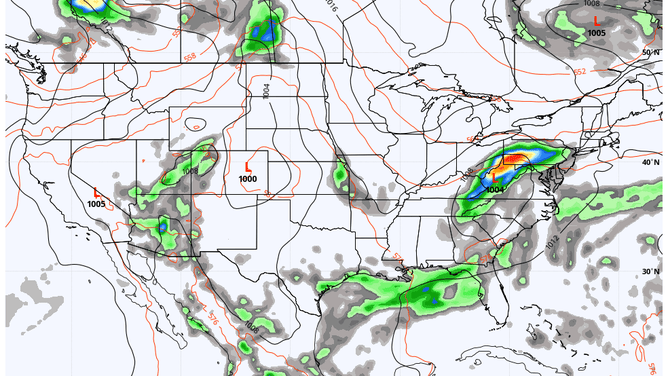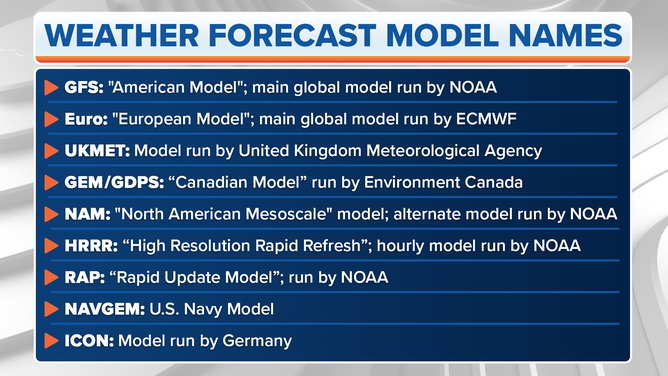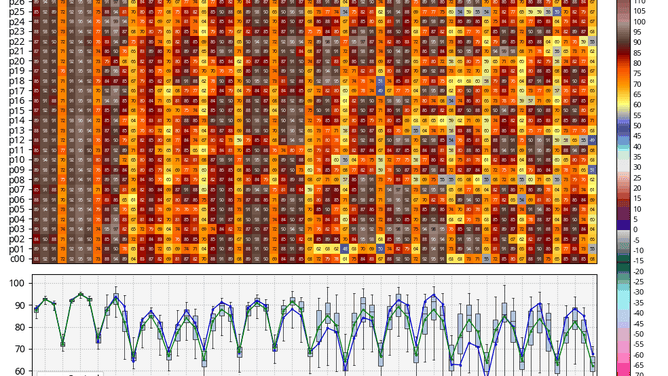Weather Geek Speak: What's a Euro or a GFS?
You'll hear those terms a lot when meteorologists talk about computer forecast models. Learn what the terms refer to and how each model is different.

A weather forecast output for the United States made by the GFS model run.
(WeatherBell Analytics)
A staple of any good forecast discussion centers around our crucial computer forecast models. These run thousands of computations using atmospheric dynamics equations that would make any math geek do a double-take (no, really! Take a peek!)
These supercomputers make (mostly) accurate weather prediction possible as humans could never make all the calculations fast enough to where the computations would be done before the forecast itself became obsolete. ("Sir, I have good news and bad news! Bad News: My math team just now finally got that forecast from last week completed. Good News: We accurately predicted it was going to rain three days ago…")
But while we have made incredible strides in computer technology to calculate much of the atmosphere, we still don't have anywhere near enough computing power yet to calculate all of the atmosphere.
Forecast models then run their calculations for layers of the atmosphere over grid points on the surface. That means there are plenty of spots in the atmosphere where we make assumptions to fill in the gaps. Those gaps are getting smaller as computers get faster and can crunch more data in a reasonable time. We have to choose what parts of the atmosphere to calculate and what factors to assume until then.
Several different choices
To that end, meteorologists have several different forecast models at their disposal that each take a different approach to what parcels in the atmosphere it can calculate, what data to use and what calculations to use to simulate the gaps.
Since the required computing power is enormous, most government entities run most models — though not all. In the United States, the two most popular models you'll see mentioned on social media are the Global Forecast System, or "GFS" for short; also colloquially known as "The American Model" -- and the model run by the ECMWF, the European Centre for Medium-range Weather Forecasts; colloquially known as "The European" model, or "Euro" for short.

NOAA runs the GFS with support from several other U.S. research and government entities. The ECMWF is based in England but is a private consortium supported by 34 European countries. There are different models run by government weather agencies, including the UKMET run by the British, the GEM / GDPS run by Environment Canada, and the ICON run by Germany, to name a few. But the Euro and GFS are the two you'll hear about most often.
These larger models run four times a day at midnight, 6 a.m., noon and 6 p.m. on UTC, though meteorologists use the "Zulu" time scale for model time stamps.
Forecasts range from a week to 16 days in some cases.
Some models run more often, like the RAP and HRRR, which make new calculations every hour but don't forecast out as far.
Ensembles: The new kids on the block
You might also see mentions of "ensembles," a fairly recent advancement in weather forecast prediction. Instead of just running one model calculation, ensembles run several calculations with slight tweaks to the model formulas to better solve some of those gaps in our information.
The main Euro ensemble, for example, runs 50 separate model runs for the same time and space, giving forecasters a better handle on how confident the models are in their calculations.
If a vast majority of the ensemble runs paint a similar picture, then a forecaster can have high confidence the models are on the right track. If an ensemble run shows wildly differing opinions - say 15 of the model runs indicate snow while 20 others suggest 49 degrees and dry - then you have very low confidence in the presented forecast and head to your nearest drug store for an antacid and headache-relieving medicine of your choice.

A GFS Ensemble model put showing 30 different models running predicted high temperatures for a week in Denver.
The GFS (whose ensemble product is known as GEFS) and others run ensembles as well.
So next time you see a bit of an acronym alphabet soup next to a cryptic timestamp with a Z, odds are pretty high they're talking about a computer forecast model!